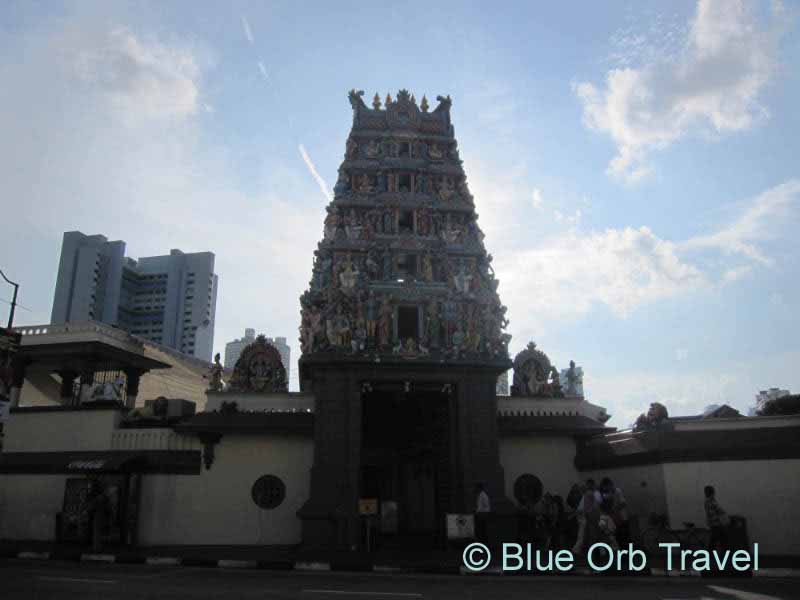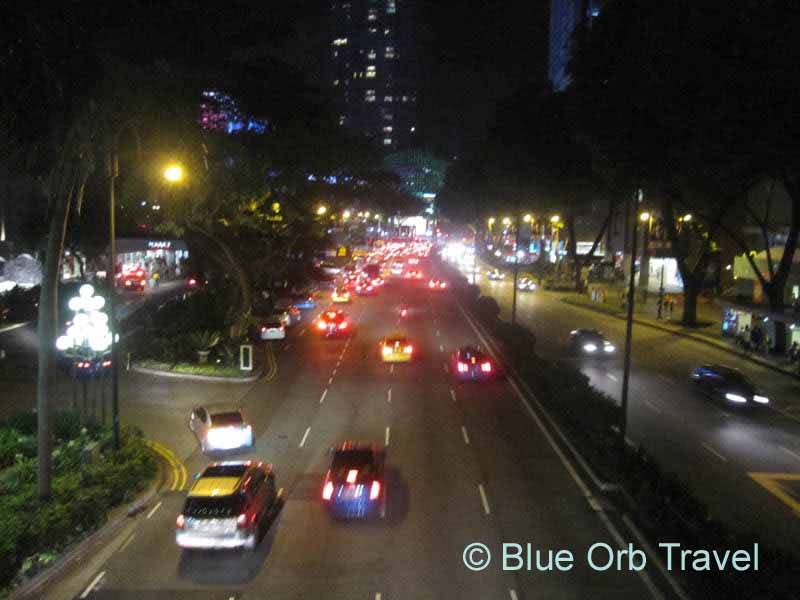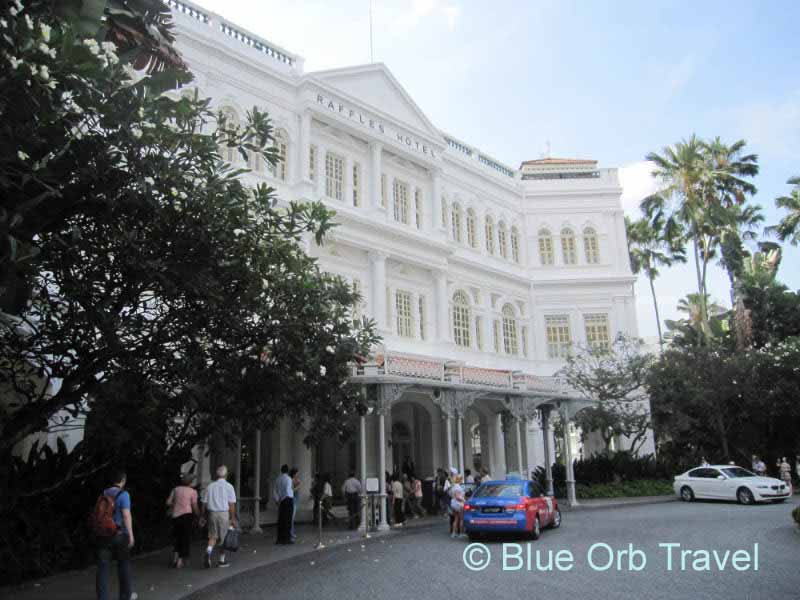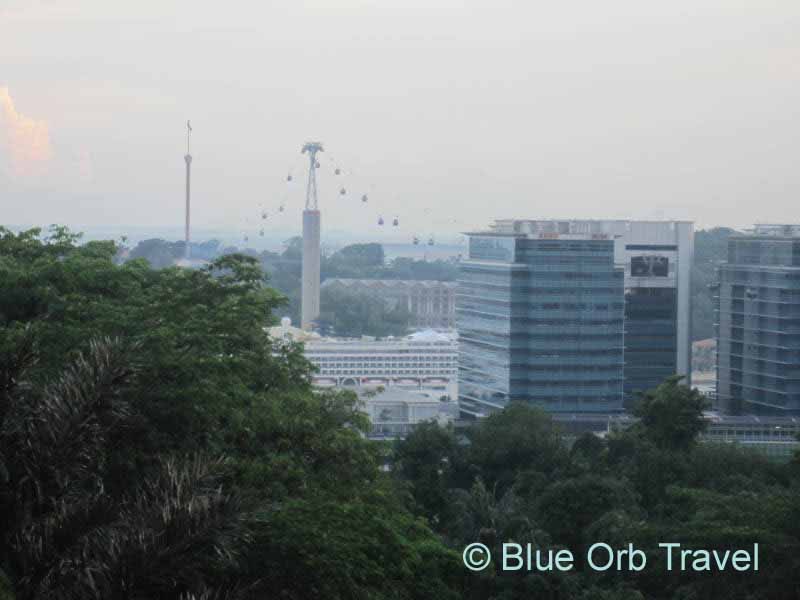1. Transportation Made Easy
You can get to Singapore by train, bus or boat, but most visitors will arrive by plane at the spectacular Changi Airport, widely regarded as one of the most beautiful in the world. There you will be greeted by an efficient, friendly staff as you walk through the great halls festooned with live orchids and other exotic blooms. Going through customs is a breeze and almost 80% of the world’s countries can travel to Singapore without a visa! The Singapore Mass Rapid Transit subway or MRT is one of the best transportation systems in the world and you can catch the 30 minute ride from the airport into downtown for about $2. Although much of downtown Singapore can and should be walked, the MRT will be your best friend when your feet get tired or you want to explore some of the outer regions.

Along with Bangkok, Singapore is one of the two major gateway cities for Southeast Asia. For those heading north, I recommend taking the bus from the Golden Mile Complex on Beach Road where I got a ticket to Kuala Lumpur, Malaysia for $32. There are many bus companies to choose from there and I can recommend Five Stars Tours (Update: Five Stars Tours abruptly closed all operations in January 2014), which provided a safe, comfortable ride across the Straits of Johor and up the Malay Peninsula. In short, Singapore has transportation all figured out and tourists will appreciate the ease, comfort and convenience that this travel hub provides.

2. Amenities Galore
When it comes to amenities, the city-state of Singapore is at the head of the pack. Whether it’s hotels, dining, shopping or top quality hospitals you’re looking for, Singapore has them all. The spectrum of available accommodations runs the gamut from five star hotels to budget hostels, but visitors will find few real bargains when it comes to looking for a place to stay. Perhaps a city with so much else to offer can be forgiven this one disappointment. On the other hand, Singapore is a diner’s paradise, particularly if you’re into street food. There are vendors everywhere, now mostly in well regulated centers, which is somewhat reassuring to wary visitors concerned about sanitary standards. Be sure to save some room in your suitcase or backpack, because nobody leaves Singapore empty-handed. The shopping is simply too good to pass up. In addition to toys, house wares and silk ties and scarves, I have purchased three custom tailored suits on my various visits to Singapore.

Planning ahead regarding medical care is an important part of any trip and includes having adequate health insurance, medical evacuation coverage when appropriate and a contingency for where to seek assistance when needed. Singapore is fortunate to have several excellent hospitals, including Mount Elizabeth Hospital and Singapore General Hospital. It’s no accident that Singapore has one of the world’s highest life expectancy and lowest infant mortality rates. One tip to remember regarding medical care in any foreign city…you can always check with your embassy or consulate for advice or recommendations.

3. Multicultural Diversity
Singapore is an outstanding example of how people from diverse ethnic and religious backgrounds can live together in harmony, enjoying their differences, while at the same time supporting their commonality. There are many cities and countries throughout the world that could learn a lot here. One need only take a ride on the MRT to see people from all backgrounds in close proximity, interacting with one another on a friendly basis. Singapore actually showcases its diversity in its various cultural enclaves which comprise several of the downtown districts. Dating back to 1330, Chinatown is one of the largest and oldest Chinese communities in the world. It is home to a number of historic, cultural and architectural sites, not to mention the accommodations and dining experiences available there. Just across the Singapore River is Little India which features the Tamil culture and is a popular destination for visitors who appreciate curry, enjoy shopping and want to see some interesting temples. Rounding out the cultural panoply in Singapore is Arab Street. Perhaps you’ve heard the expression “The Arab Street” used to describe popular opinion in the Muslim world. Well this is the real thing…a neighborhood actually known as Arab Street, where you can experience the real Arabian culture, including ethnic cuisine, bargaining for your purchases in the souks, and Singapore’s largest mosque, the Sultan Mosque. With such a diverse array of cultures in Singapore, you’ll feel like you’ve had a quick trip around the world by the time you leave.

4. Orchard Road
The Orchard Road area, known simply as Orchard by the locals, is one of my favorite spots in Singapore. As Singapore’s more homey answer to Tokyo’s Ginza, it is a hub of activity day and night with its shopping, entertainment, hotels, restaurants and parks. Now a one way street, it got its name back in the 1800s when it was the road that led to the orchards and plantations. Just take the MRT to the Orchard station and you’ll find yourself in the center of activity. Pedestrians will find it easy to navigate this tree-lined boulevard with its crossing bridges and walkways underneath the road. One could spend days wandering around this famous district, just browsing through the upscale department stores and shopping plazas and taking periodic refuge from the crowds in the Botanic Gardens, where admission is free.

5. The Historic District
Considered the founder of modern Singapore, British statesman Sir Stamford Raffles sailed up the Singapore River in 1819 and developed a town plan for the future city-state that has endured to this day. Visitors can now get a glimpse of history by walking along the river from its outlet in Marina Bay all the way up to Clarke Quay. Before heading up river be sure to check out Clifford Pier, the original site of an old fishing village and stop by the Merlion Park with its statue spewing water from its mouth. Here you will also get a glimpse of the unbelievable Marina Bay Sands Resort, a series of three skyscrapers with what looks like a huge ship on top. Now going up the Singapore River, along the way you will see the Parliament House and Raffles Landing, the original landing site of Sir Stamford Raffles, now marked by his statue. A little farther north of the river are the St. Andrews Cathedral and the iconic Raffles Hotel. The Raffles is one of the most famous hotels in the world, patronized by the rich and famous including many literary giants and, thankfully, the hotel grounds are open to visitors. Finally reaching Clarke Quay, visitors will be delighted with the combination of historic buildings and modern pedestrian mall right in the heart of Singapore.

6. Sentosa Island
Sentosa is an island resort just south of downtown Singapore which features a mile long beach, five star hotels, golf courses and many other attractions suitable for all members of the family. Visitors can enter Sentosa by a spectacular, albeit expensive, cable car ride from Mount Faber, by public transportation or by walking across the new Sentosa Boardwalk, where the admission fee is one Singapore dollar. Other attractions on this popular resort island include a Butterfly Park, another, bigger Merlion Statue and, my favorite, the Underwater World which is an underground aquarium with a horizontal escalator that transports you through a glass tube surrounded by water. You’ll feel like you are swimming with the fish without getting wet! Sentosa is definitely worth seeing if you have time during your visit to Singapore.

7. Architectural Splendor
For students of architecture, Singapore is a veritable encyclopedia of building styles, reflecting various cultures and periods, while at the same time based on utility and the best use of limited space. Within the short span of a few city blocks you will see everything from ultramodern skyscrapers to Art Deco construction to Colonial Period buildings. As you wander the city you will be impressed with the number of places of worship that demonstrate the great diversity of the city, including Chinese, Hindu and Sikh temples, Jewish Synagogues, Islamic Mosques and Christian Churches. Over the years that I have visited Singapore, it seems that the city has been in a constant state of construction, with new skyscrapers and ever more dazzling buildings like the Esplanade Theatres on the Bay going up all the time. Fortunately, the city fathers have a great respect for the past and make allowances for the preservation of historic structures. While a signature building representing the city-state of Singapore has yet to emerge, this beautiful metropolis has definitely taken its place among the great architectural destinations of the world.

8. Festivals and Holidays
On my first trip to Singapore I had the good fortune to arrive at the time of the Chinese New Year celebration. The spectacular nighttime parade down Orchard Road is something I’ll never forget. I have also experienced the Festival of the Hungry Ghosts during which deceased relatives are said to return to the realm of the living and wander the earth for thirty days. While they are making their rounds, living relatives make food offerings to prevent the deceased from performing acts of mischief. Because of the rich diversity of Singapore there are many other festivals, events and holidays for tourists to experience. In addition to having most of the western holidays, Singaporeans also celebrate the Dragon Boat Festival, Teacher’s Day, Children’s Day and Hindu, Buddhist, Muslim and Christian holidays. Planning ahead is important because accommodations are harder to come by during these periods and costs are higher.

9. Temperate Climate
Singapore is located just 85 miles north of the Equator, so it’s not surprising that it would be hot and humid there. But ‘some like it hot’ and I happen to be one of them. With little variation in the temperature and steady rainfall throughout the year, there are no distinct seasons in Singapore. The wettest months are from November to January when it may rain for a time every day, usually in brief bursts in the afternoon, and the driest months are from May to July. Singapore is often described as having a tropical rain forest climate or having monsoon characteristics, but being a land of generally clement weather makes this a comfortable, pleasant place to visit year round. For those not used to humidity, you can seek refuge in almost any indoor facility, including the MRT, shopping arcades and underground walkways.

10. Tiger Beer
I would be remiss if I did not mention one of Singapore’s most famous and popular products…Tiger Beer! While the name Singapore is derived from the Malay word Singapura, meaning Lion City, it is the tiger for which the city’s signature adult refreshment is named. And younger travelers will be happy to know that adulthood begins at age 18 in Singapore, at least where drinking is involved. In 1932 Tiger Beer became Singapore’s first locally brewed beer and it is now available in 60 countries worldwide. This pale lager comes in bottles with a strikingly attractive label which loses nothing in the translation when applied to souvenir tee-shirts and mugs. So, when you need a break from shopping and sightseeing on a warm afternoon in Singapore, what could be better than ducking into a pub and having a cold Tiger Beer!


Singapore looks really nice from your picture. I’ll plan to go there early next year.
Good way of explaining, and good piece of writing. I’ll use some of this information for a presentation, which I am going to deliver in university.
Really enjoyed this article and especially appreciate the information you shared on your Tech Specs page which will assist the internet visitors for setting up new blog or even a weblog from start to end.